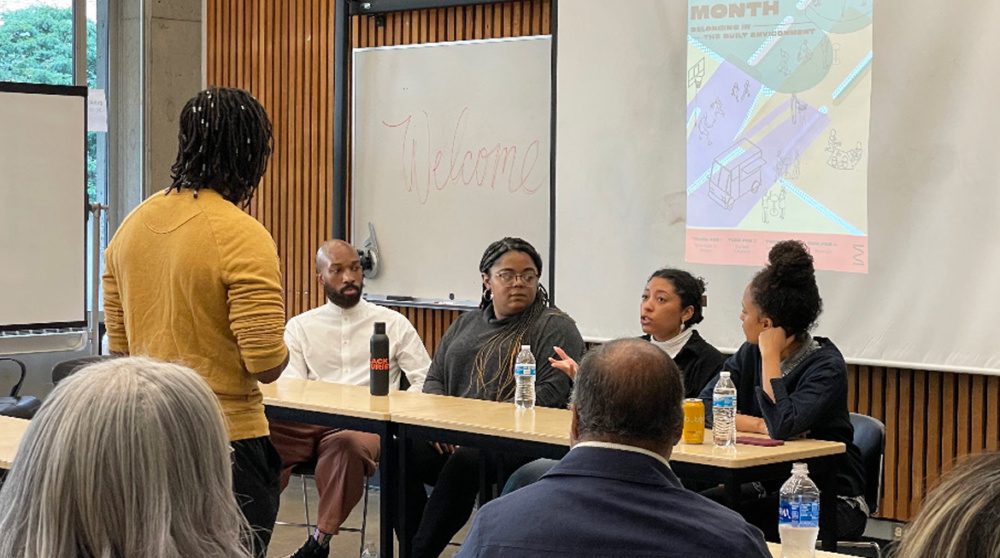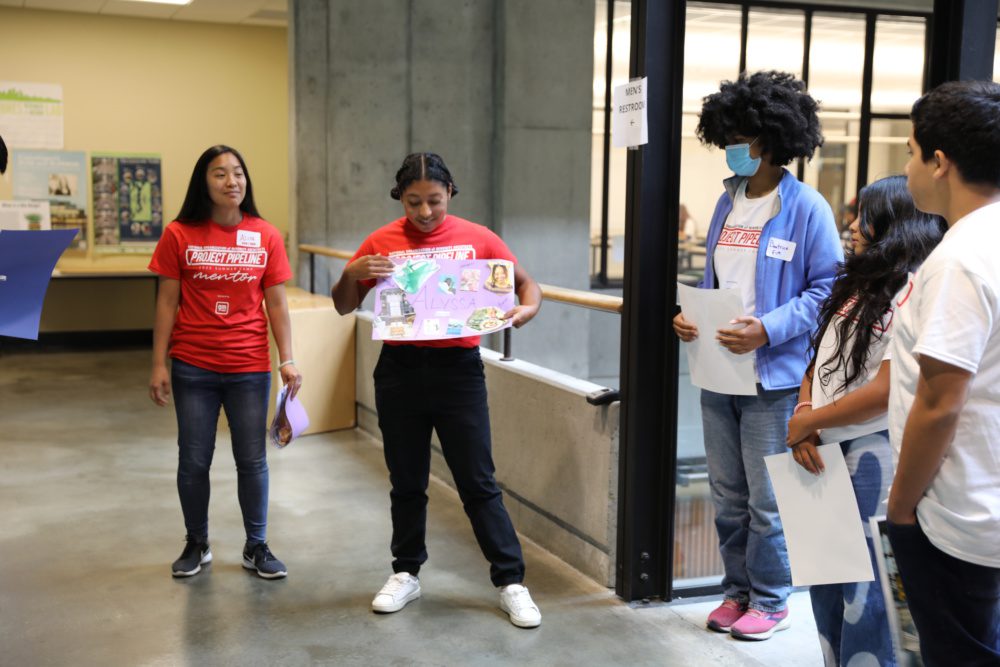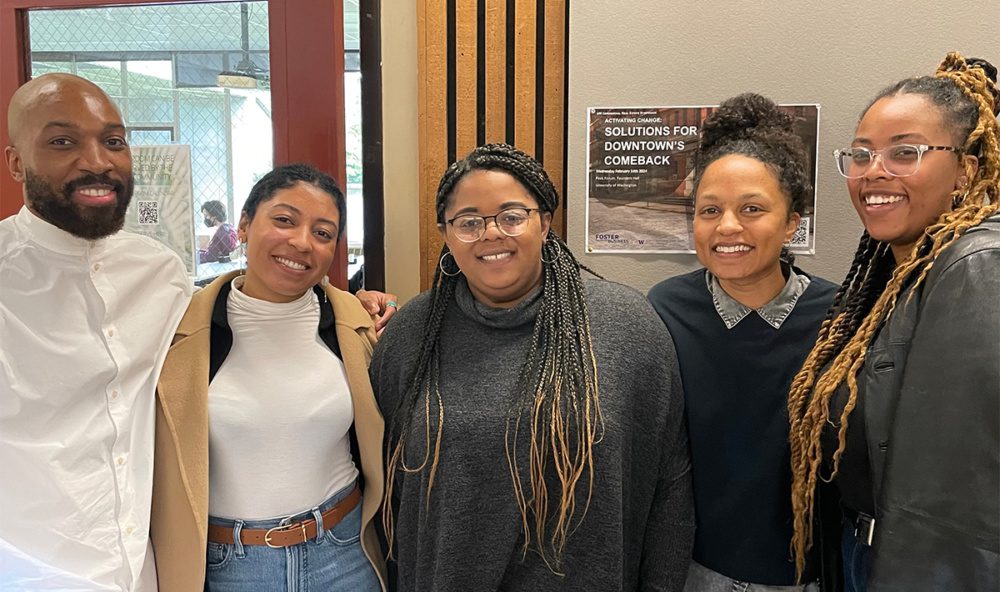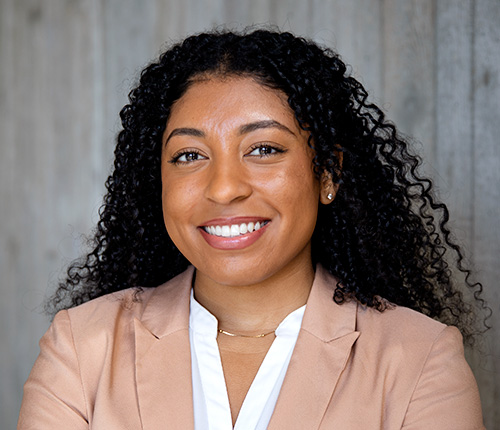By Alyssa M. Mitchell
Alyssa is an active member of NOMA NW, AIA Seattle Diversity Roundtable, and the AIA Seattle Membership Committee. She is also an advocate for youth mentorship and leadership development.
What does it mean to belong in the built environment? This was the topic of discussion during the University of Washington National Organization of Minority Architecture Students (UW NOMAS) chapter’s celebration of Black History Month titled “Belonging in the Built Environment.” Throughout the month they held a series of events including a panel discussion that explored themes of Afrofuturism, diversity trends in the profession, and the infusion of personal culture within design.

Belonging in the Built Environment panel members (left): Simba Mafundikwa, Cierra Higgins, Alyssa M. Mitchell, Margaret Knight
I joined several other members of NOMA NW to participate in this fruitful discussion that gave voice to the underrepresented Black Architecture community in Seattle. Below, I would like to explore some of the most thought-provoking questions we touched on at the event.
Does your race and culture factor into your design process? If so, in what ways?
My experience as a Black and Hispanic woman is integral to who I am, and thus infused in my design process. However, I view Architecture as a service profession and try to consider the values and needs of the end user above my own preferences.
For example, some projects have a particularly known culture and would be better served if I expanded my world view. This looks like learning, researching, and studying important imagery, social patterns, and cultural significance that could be incorporated into the design process.
How do you envision the future of architecture as a profession if it continues its trend of diversifying the profession? Is it a trend?
My hope for the profession is that we continue the trajectory of increasing the number of Black and minority Architects in the profession. This is done by reinforcing and strengthening the pipeline of student interest in Architecture, completion of accredited programs, professional licensure, and leadership advancement. There are many programs in place that are taking up this cause like NOMA Project Pipeline, NOMA HBCU Professional Development Program, LeaderFlow and many others.
“To truly make a difference, the onus cannot lean on the few. I urge the entire Architecture community to make diversity a stronghold of firm culture and philosophy, because this makes us better designers and better equipped to design for the diverse communities our Architecture serves.”
To encourage the success of these efforts, Architecture firms, especially those with power and privilege, must continue to provide support, mentorship, and advocacy for these programs as well as the individuals. I am hopeful for the future of diversity in the profession but want to caution against the burn out experienced by those invested in the work. To truly make a difference, the onus cannot lean on the few. I urge the entire Architecture community to make diversity a stronghold of firm culture and philosophy, because this makes us better designers and better equipped to design for the diverse communities our Architecture serves.

Alyssa M. Mitchell volunteering as a mentor at the 2023 NOMA Project Pipeline
What have been some of your most difficult challenges in your profession?
Numerous challenges exist within our profession that are independent of race and culture. The panel collectively discussed difficulty finding a first job and getting through the licensure process. Our profession carries many barriers to advancement because of the great responsibility that comes with designing in the Built Environment. However, the minority experience often has multiple stress factors on typical challenges due to the lack of exposure, guidance or mentorship.
Many minority professionals do not have prior connections in the industry or struggle to find community when they do break through. I’ve been able to overcome some of these difficulties by leaning on the Black Architecture community and leaning into the love of design as a bonding element. I encourage comfort with the discomfort because adversity can often be an opportunity for personal and professional growth.

Overall, this was a great experience to share amongst my fellow NOMA NW members. Sharing our professional success and difficulties while navigating as Black Designers was a vulnerable yet fulfilling opportunity.
We all had overlapping experiences, yet our individuality showcased the infinite layers of diversity that exist among us and have a positive impact on design philosophy and firm culture. Having the opportunity to share the stage with my fellow panelists was a treat! I would like to extend a huge thank you and congratulations to the UW NOMAS leadership who are already changemakers and advocates in the profession.
Looking to get involved?
There are numerous sponsorship and volunteer opportunities that you and your firm can get involved with nationally and locally. Visit our EDI webpage for a full list of some organizations that are doing great work in our professional community that we encourage you to learn more about and support.
